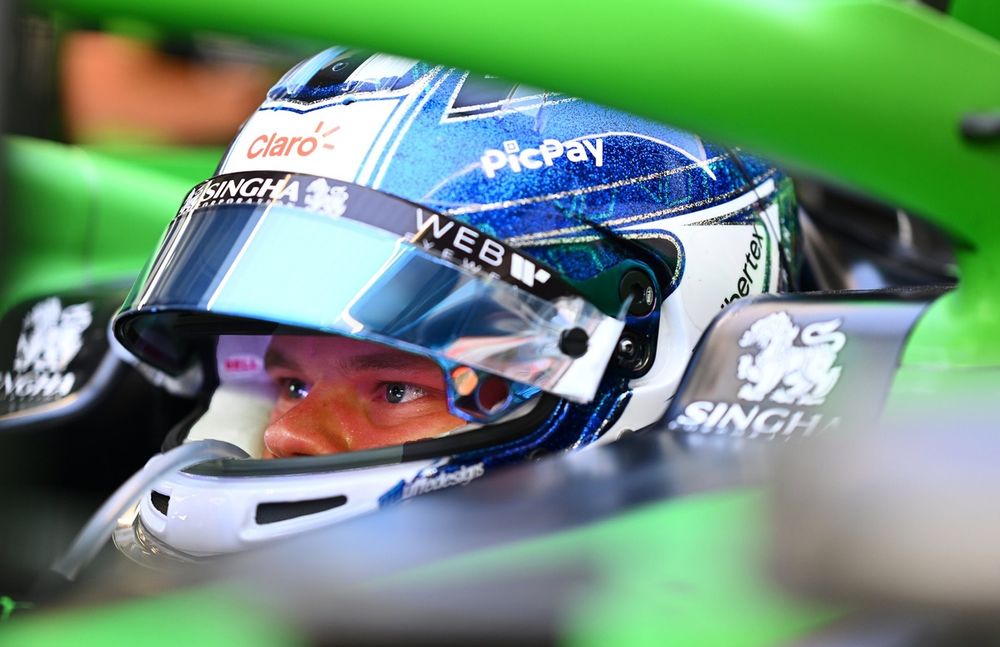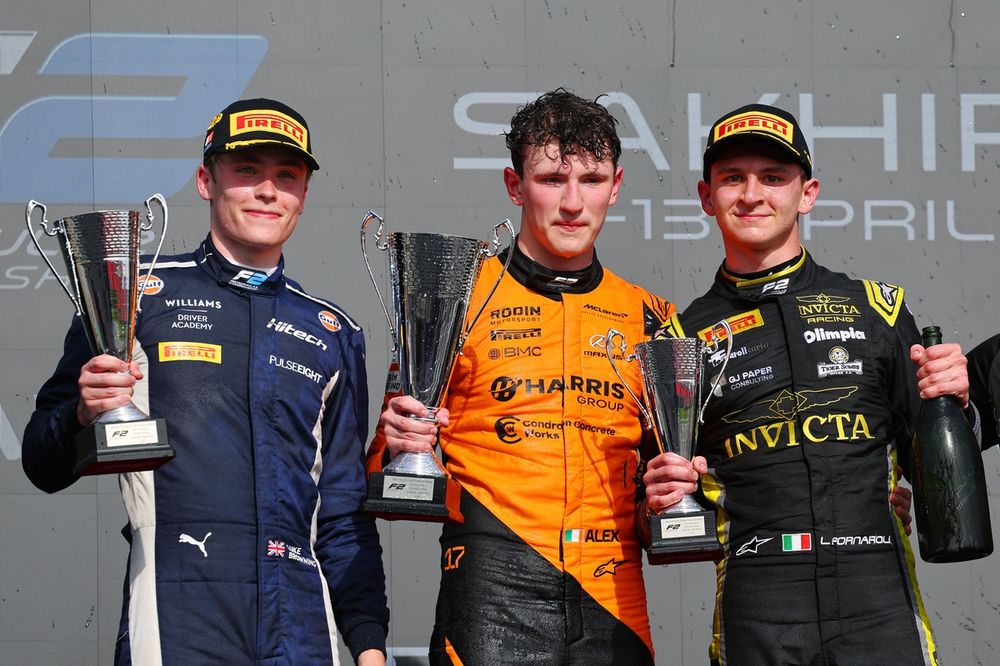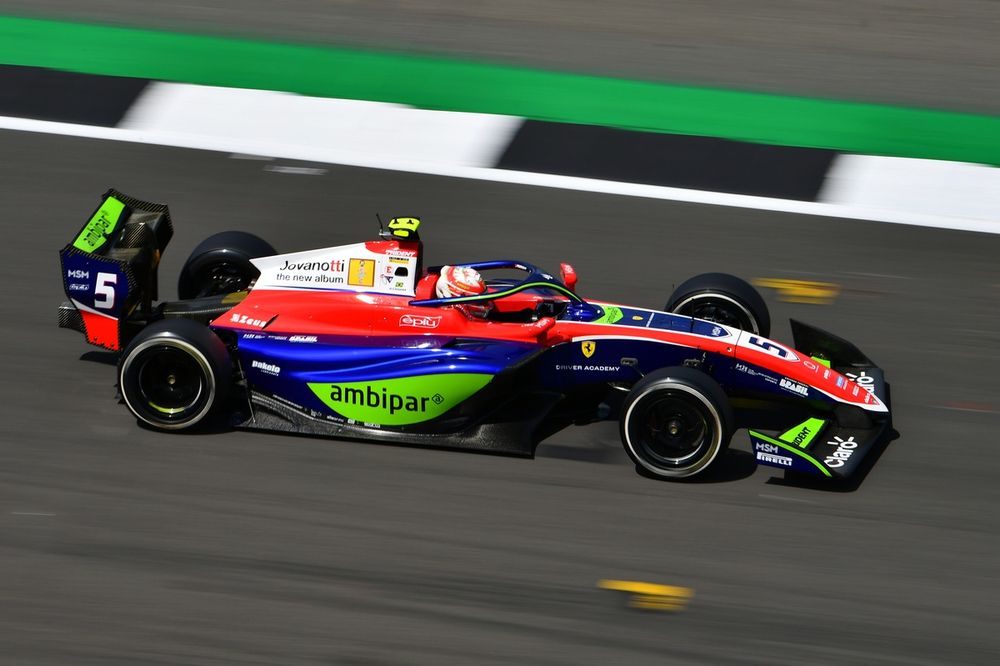A myth was dispelled over 2024, one that changed the dynamic of 2025’s silly season. Oliver Bearman‘s spectacular debut run as a short-notice call-up for the unwell Carlos Sainz at that year’s Saudi Arabia race rather disposed of the idea that the current generation of cars were difficult for rookie drivers to handle.
This was a standpoint that had largely governed the driver transfer market over the previous two years.
Indeed, a static silly season in the transition from 2023 into 2024 was also perhaps dictated by that notion; while Logan Sargeant was blooded and then retained, AlphaTauri/RB had been surprised by Liam Lawson’s showings in late 2023, having already got Daniel Ricciardo under contract for the following year.
Where Ricciardo floundered, younger drivers flourished. Further to Bearman’s showing at Jeddah in 2024, more rookies (or drivers with less experienced) continued to shine as chances became available through the year.
Lawson picked up from Ricciardo again in the final stages of 2024 and earned a Red Bull drive, Franco Colapinto proved to be an immediate upgrade over Sargeant, and Alpine even gave Jack Doohan a run in the final race of 2024 ahead of a debut season that ended up being just six races long.
The addition of Andrea Kimi Antonelli, Gabriel Bortoleto, and Isack Hadjar on the 2025 grid showed renewed faith in youth. Mistakes have been inextricably linked to that risk, but there’s a reason they’re called ‘rookie errors’.
You’d expect 2026 to have been somewhat similar, given the clean-sheet approach in the technical regulations – but Cadillac’s decision to pursue experience (by picking up two drivers who lost their seats for 2025) and the largely static approach to next year’s pairings elsewhere has created a bit of a bottleneck into the championship.
2026’s rookie crop will be much smaller – if, indeed, it even exists. There’s a few names who have been mentioned as potential race drivers next season, but for many their chances are remote.
Arvid Lindblad

Race winner Arvid Lindblad, Campos Racing
Photo by: Formula Motorsport Ltd
There is a degree of expectation that Arvid Lindblad will be a Racing Bulls driver next year. Although the Anglo-Swedish racer sits ‘only’ seventh in his debut F2 campaign, Helmut Marko is known to be a fan of Lindblad and it is understood that he has impressed Red Bull’s kingmakers thus far.
Lindblad drove a Red Bull in FP1 at the British Grand Prix, and further outings will surely follow later in the season if the Racing Bulls seat does indeed go his way. While he was a second away from Lewis Hamilton‘s pace in that session at Silverstone, Lindblad was only half a second away from Max Verstappen‘s benchmark.
Their overall run plans were not necessarily comparable as Verstappen did a long run on the medium tyre at the point where Lindblad did his soft-tyre runs – but the four-time champion provided an earlier benchmark on the same compound.
Should Lindblad find his way through the Red Bull door for 2026, the difficulty for the management will be in determining who goes where. Which one of Yuki Tsunoda and Lawson gets left out in the cold, and is it worth promoting Hadjar to the lead Red Bull team?
There’s a lot for the two teams to decide in the lead-up to next season, but it very much seems that Lindblad is in the reckoning whichever way Marko et al cut it.
Paul Aron

Paul Aron, Sauber
Photo by: Guido De Bortoli / LAT Images via Getty Images
Alpine has a bit of a dilemma for next season. Without any experienced options, the team is set to stick with youth – and for that, its focus will likely remain internal: does it keep Colapinto in the car alongside Gasly, or will Paul Aron get the call-up for next year?
The smart money would be on Colapinto to stay; the Argentine’s performances have been improving of late, and he carries significant interest from Latin American brands looking to align themselves with his employer. But if Flavio Briatore decides that Colapinto is not the driver for the future, then Aron may find a race seat coming his way.
It is said that the Estonian has been impressive in private TPC testing, although this is difficult to verify. We know that he has been largely on the pace in his practice sessions with both Alpine and Sauber this year, although Hungary had been a touch more difficult to read given the powertrain issue he sustained in FP1.
You could also make the case that Aron also gave Bortoleto and Hadjar a run for their money in F2 last season, although his title challenge trailed off slightly by the end of the season.
He’s an outside bet, but don’t discount Aron from an F1 drive just yet.
F2’s first-year crop – Fornaroli, Browning, and Dunne

Podium: Race winner Alex Dunne, Rodin Motorsport, second place Luke Browning, Hitech TGR, third place Leonardo Fornaroli, Invicta Racing
Photo by: Clive Rose / Getty Images
It does feel a little hard to justify Lindblad’s place over other drivers currently on the market for an F1 drive for next season, given that there are three fellow first-years who have been mighty impressive this year. Yet, they’re unlikely to get a shot for 2026, unless they’re able to secure bonafide reserve roles and find a way into the championship via that role.
Of those three – Leonardo Fornaroli, Luke Browning, and Alex Dunne – only Fornaroli is unattached to an F1 junior team. This gives the Italian theoretical freedom but, equally, puts him at risk of running out of opportunities for a role as teams are more likely to opt for one of their own youth products.
In any case, Fornaroli has been the standout in F2 this year, demonstrating a level of consistency that is impressive from a driver so young. After winning the F3 title last year without any victories, he’s also proven that he has the decisive edge needed to chalk up the wins in F2.
Browning has also been strong; while less consistent than Fornaroli, the Cheshire native has been a frequent visitor to the podium throughout the season. One of the weird quirks in Browning’s season is in his conversion rate between sprint and feature races – 130 of Browning’s 161 points have come from the full-length Sunday races, while just 31 have come from sprints.
Since his qualifying has been consistent, one might suggest that the reversed-grid nature of the sprints tends to catch him out, and that the build-up of a tyre offset over the longer races tends to fit his style. He’d be a natural fit for Williams to be a full-time reserve in 2026.
Dunne, meanwhile, has been both impressive and infuriating in equal measure. Perhaps one of the early favourites in the F2 reckoning, having set the pace with wins in Bahrain and at Imola, his desperation to retain the lead off the line in Monaco led to a tremendous pile-up as he speared into the luckless Victor Martins.
While Dunne had to rein in his less compromising instincts, he has also been on the side of bad luck as technical slips through the year have deprived him of strong results.
The Irishman was stripped of second in Austria’s feature race through surpassing the limit on plank wear, and was later was hit by a 10-second penalty after his Spa feature race win after the defined starting set-up procedure was not engaged – he fell to ninth as a result. Without those indiscretions, he’d be much closer to Fornaroli in the title race.
Beyond 2026: Can F3’s new champion follow Bortoleto’s path?

F3 Drivers champion and race winner Rafael Camara, Trident
Photo by: Formula Motorsport Ltd
Rafael Camara won F3 at a canter this season, 42 points clear of Nikola Tsolov as the Brazilian clinched the title with a round to spare. Part of Ferrari’s young driver academy, the 20-year-old Pernambucano might be the Scuderia’s next cab off the rank now that Ollie Bearman is fully ingratiated within the world of F1.
Much of Camara’s hopes of winning two titles on the bounce does rest with which team he ends up racing with in F2 next year. While he’s not in contention for next year’s F1 grid, he could very well replicate his countryman Bortoleto with a step up in 2027 if he can clear the first-year hurdle. With Ferrari support, Camara can rely on the resources to make that dream happen.
During his F3 title winning campaign, Camara demonstrated prodigious qualifying pace and secured pole in the first three rounds of the year – and added two more across the nine-round championship.
Qualifying so well in F3 is a bit of a double-edged sword; given the grid sizes, the reversal of the top positions for the Saturday sprints extends to the top 12 – and thus, Camara found it difficult to make up positions from there, given the nature of F3 races where tyre offsets are almost non-existent.
But that won’t be as much of a problem in F2; if he can show similar progress to previous champions Bortoleto and Fornaroli, he’ll be a much talked-about contender in next year’s silly season discussions.

Rafael Camara, Trident
Photo by: Formula Motorsport Ltd

